TAMARA AND LUIS ARE members of Santiago, Chile’s upper-middle class, and yet they defy the common view that members of this affluent group focus on hoarding opportunities1 for themselves and their children. Tamara, a pharmacist working for a government agency, and Luis, an architect, live in La Florida, an up-and-coming mixed class district in southeastern Santiago. They have Italian ancestry, grew up in downtown Santiago, and attended elite public schools. Tamara’s father was a factory worker that later opened a small business, while Luis’s father was a dentist. Their children attend a secular, alternative private school, though they feel it approximates their experiences in elite public schools. Their home is full of Latin American crafts, a few original paintings purchased at a charity auction, several art reproductions, and a poster of a young Fidel Castro (see Figure I.1). They enjoy their relationships with neighbors and “the smell of country air.” Their leftist beliefs are central to their identities. Tamara comments, “We married under democratic rule after dating for five years. We refused to wed until Pinochet [Chile’s dictator from 1973 to 1990] stepped down. We waited a week [laughs].”2 Tamara later comments that even if she had the money, she would never live in one of Santiago’s richest neighborhoods because it would make her uncomfortable given her principles.
Ledda and Miguel are also members of the upper-middle class, but their religious beliefs and childhood experiences marked by the horrors of Chile’s dictatorship make them sensitive to the plight of the poor and Chile’s political dissidents. Ledda is a physical therapist and Miguel is a physician. Her parents were teachers while his father was a public university employee. They live with their children in the upper-middle-class community of Ñuñoa, located in eastern Santiago. They send their children to a private Catholic school near their home, and often hold school-related parties there. Their home includes original artworks as well as several prominently located Bibles and crosses: “It’s like a cemetery,” Ledda jokes (see Figure I.2). Her childhood under the dictatorship profoundly shaped her adult experiences: “In the North, I went to an elitist school in Antofagasta, but the priest was forced into exile because he protected people [from the military] . . . People talked about the proletariat in my school and home even though my family wasn’t political . . . this was because my mother’s fellow teachers were disappeared.”3
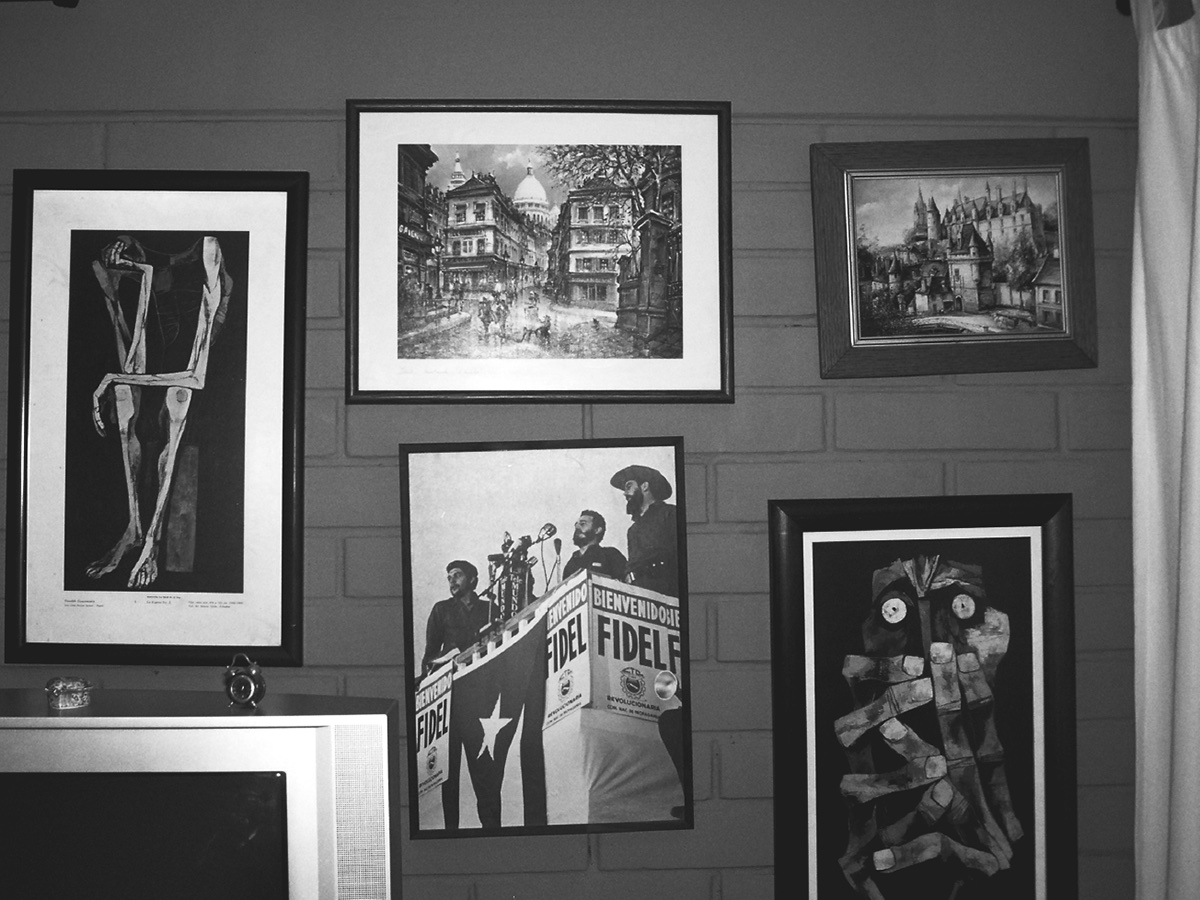
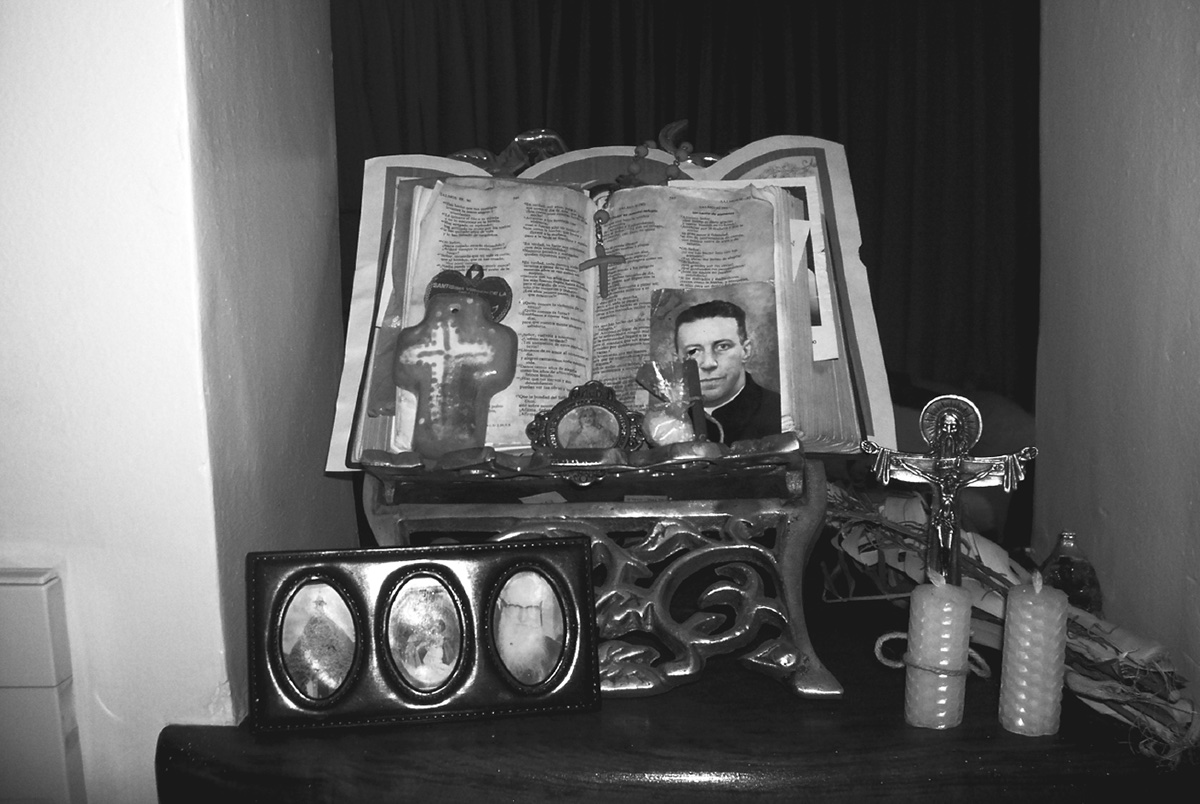
Marcela is a member of the lower-middle class, and hence she worries about the risks of her family’s frequent contacts with the poor for her fragile class standing. She is a single mother that drives a truck transporting produce from a large wholesale market. She hails from northern Chile, but after a falling out with her father, she migrated to Santiago to finish her high school education. Her living room includes artworks depicting homes and harbors in regional cities, including her hometown, highlighting her provincial origins (see Figure I.3). While her eldest daughter attended an elite public high school, received a degree, and is now a professional, she sends her younger children to a Catholic charter school to protect them from violence: “There are other public and charter schools near my house, but they’re terrible. I’d need to teach my kids to use a knife or a gun if I sent them there. So, I make a superhuman effort to send my kids to a private charter school that I can afford.”4
Mickey and her husband are members of the upper-middle class, but they are younger than the above interviewees and exhibit distinct lifestyles and values. Mickey, a history teacher, and her husband, a pharmacist, hail from southern Chile. They currently live in Ñuñoa and send their children to a secular alternative school. When I interviewed her in late 2008, she was thirty-seven, making her five to ten years younger than Tamara and Ledda. She and her husband like rustic decorations, including family heirlooms, that reflect his rural upbringing (see Figure I.4). When exploring schools in the community, Mickey found most options unappealing: “We looked at a religious school run by nuns, but our teenage daughter is totally anti-religion. We considered Akros [a secular private school], but it was too elitist. We could tell by the girls standing at the entrance and the despotic way they treated the custodians and the secretary. We didn’t like it at all.” While she found the alternative school appropriate for her daughter, she considered sending her younger son elsewhere: “I was a student teacher at Manuel de Salas. Their test scores are just average, and since they have a system of alternative conflict resolution, the kids are hard to manage. I doubt we’ll send our son there.”5
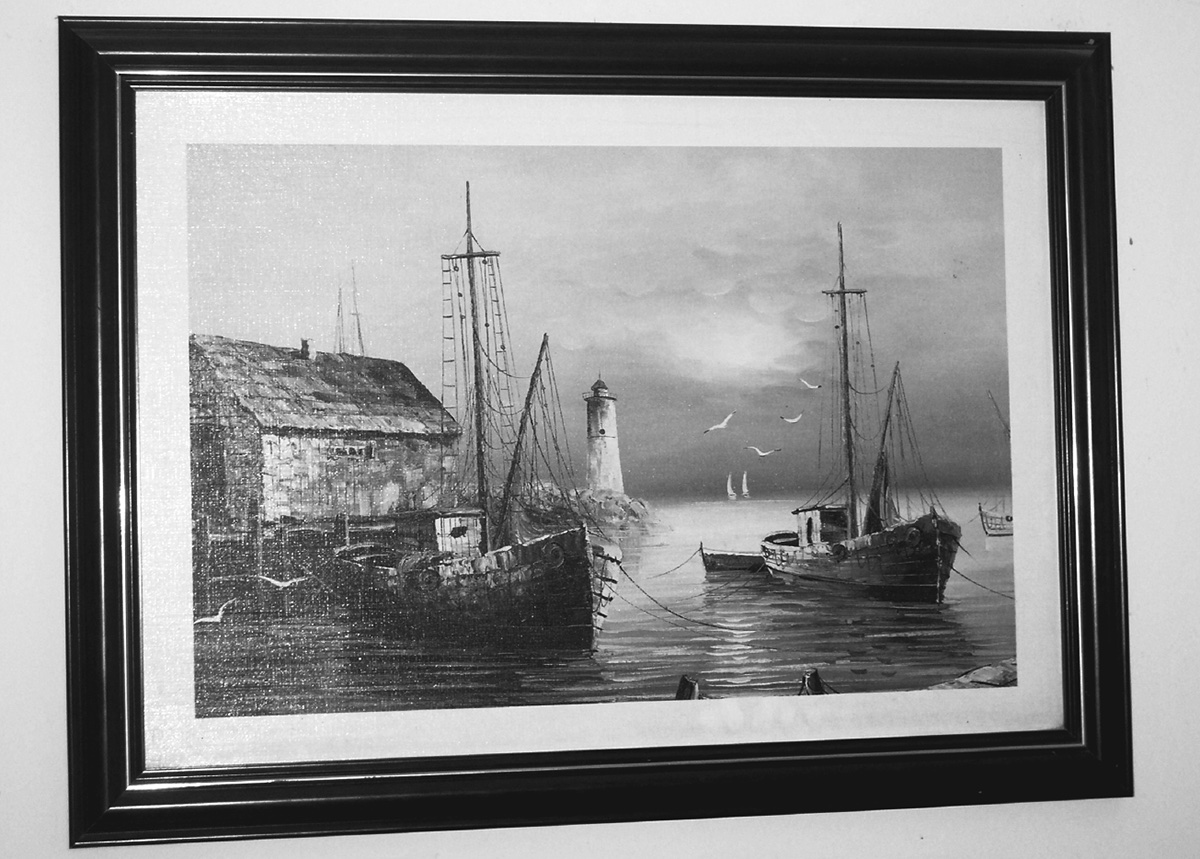
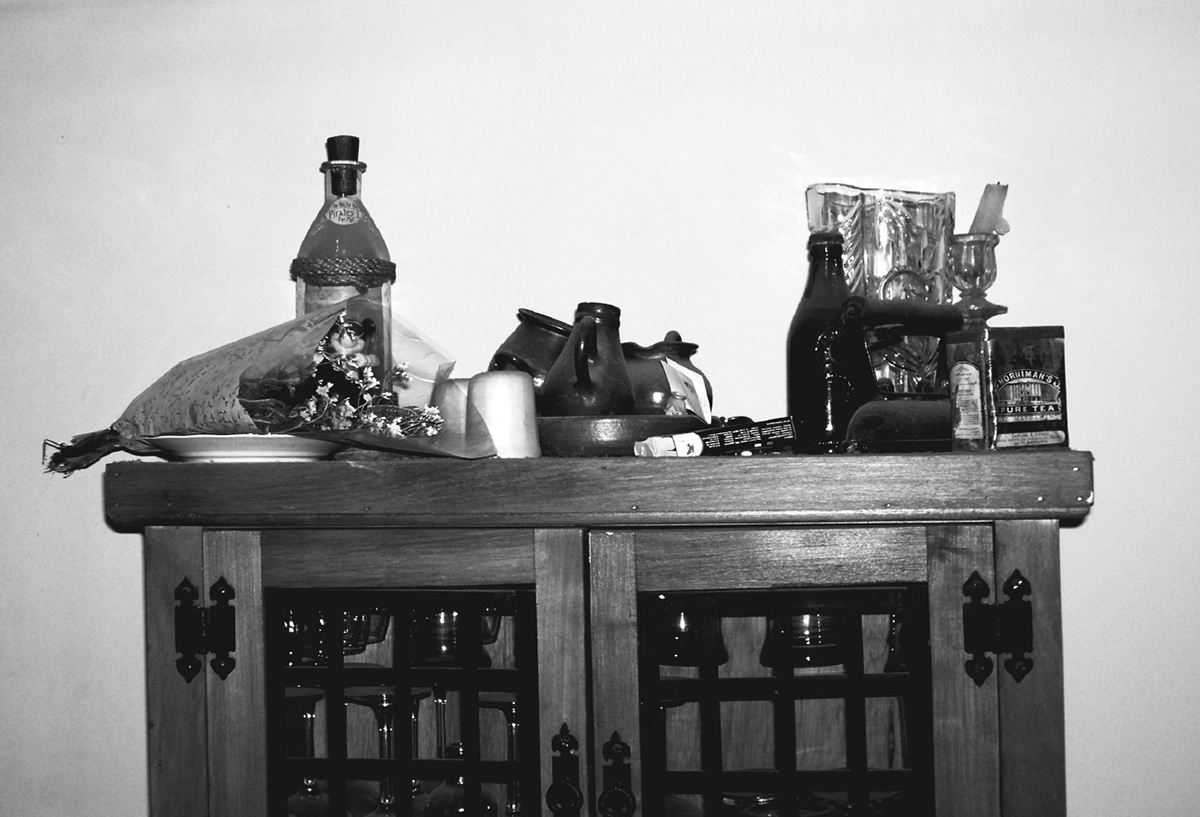
In this book, I develop a typology of middle-class groups, each with a distinct history and value orientation. Tamara is an example of a group I call “activists.” Members of this group either came from leftist families or participated in student activism under the dictatorship. Some have parents that were leftist activists and suffered imprisonment, torture, assassination, and/or exile. Parents’ political commitments and intergenerational trauma resulting from political repression profoundly affected activists. Others in this group became party members as college students during the dictatorship and faced blocked mobility in the labor market due to their “high-risk” activism.6 These highly educated teachers, arts professionals, and public employees experienced political trauma and assert humanistic and artistic values as part of their sharp critiques of free market policies imposed under the dictatorship. These values place a stamp on their market choices—they explicitly asserted or implicitly acknowledged political identities and intellectual values through their choices.
Ledda is an example of the group I call “moderate Catholics.” These individuals grew up in Catholic families and attended religious schools. Many of their parents were small business owners, bank employees, and public servants. While some in this group draw on traditions of liberation theology dominant in Chile from the 1960s to the 1980s, others are politically conservative. They work in the liberal and technical professions, sales, and in their families’ businesses. They are united by their deeply help religious values and support for tolerance toward divorced couples, single parents, and others, in contrast to more staunchly conservative Catholics and evangelical Protestants. Moderate Catholics examine markets through an ethical lens. Morality is the North Star of their market choices as they criticize hostile interpersonal behaviors, excessive competition, and materialism. They, too, criticize the Pinochet regime’s market model and/or its consequences, but they do so differently than do activists.
Marcela represents “pragmatists”—lower-middle-class individuals. Some pragmatists experienced downward mobility from middle class or affluent families, while others rose up from poverty. Pragmatists work in lower-paid clerical, sales, and service jobs. Although some pragmatists espouse religious values, they mainly focused on hard work, decency, and discipline. Pragmatists often lived near poor people, and they were the most vocal among the four groups in their criticisms of the poor. Where activists emphasized political identities and moderate Catholics highlighted morality, pragmatists fundamentally valued achievement and criticized what they perceived as poor people’s morally dangerous behavior. Pragmatists’ market decisions centered around individual achievement, distancing themselves from the poor, and complaining about the social exclusion they experience.
Mickey is an example of youngsters. While she and others have college educations and relatively high incomes like activists and moderate Catholics, they espouse distinct identities that I hypothesize reflect their birth under the dictatorship. They were not socialized in political parties or established religious organizations prior to the dictatorship, and some have experienced upward mobility as young adults. Youngsters migrated to Santiago from the provinces and/or came from working- and lower-middle-class homes and work in a variety of professions. Thus, while they do not articulate strong ideological identities, they are especially sensitive to elitism and discrimination. Their market choices are less explicitly articulated than those of the other three groups. I summarize characteristics of each group in Table I.1.
The contrasting backgrounds, experiences, and perspectives of these four middle-class groups inspire a series of questions that animate this study. First, why do members of the upper-middle class criticize market-based competition and elitism rather than focusing on securing or improving their economic positions? Second, why do lower-middle-class individuals pursue individual advantage in contrast to their more affluent counterparts? Third, how do middle-class individuals express their value commitments through their market behavior? Finally, how have the diverse perspectives of middle-class groups affected recent Chilean politics?
This book develops the concept of identity investments to answer these questions. This concept allows us to understand how different groups within Chile’s middle classes developed their identities as adults through their family, educational, and work experiences, and how these identities then shape their investments in the employment, school, housing, home decoration, and leisure markets. The idea of identity investments deliberately combines the term identity, which we usually associate with an individual’s personality, cultural background, family background, and group affiliations, with investments, which we commonly associate with wealth accumulation based on self-interested rational calculation. I define identity investments as the set of motivations and practices that guide economic decisions so that they affirm individuals’ deeply held values.
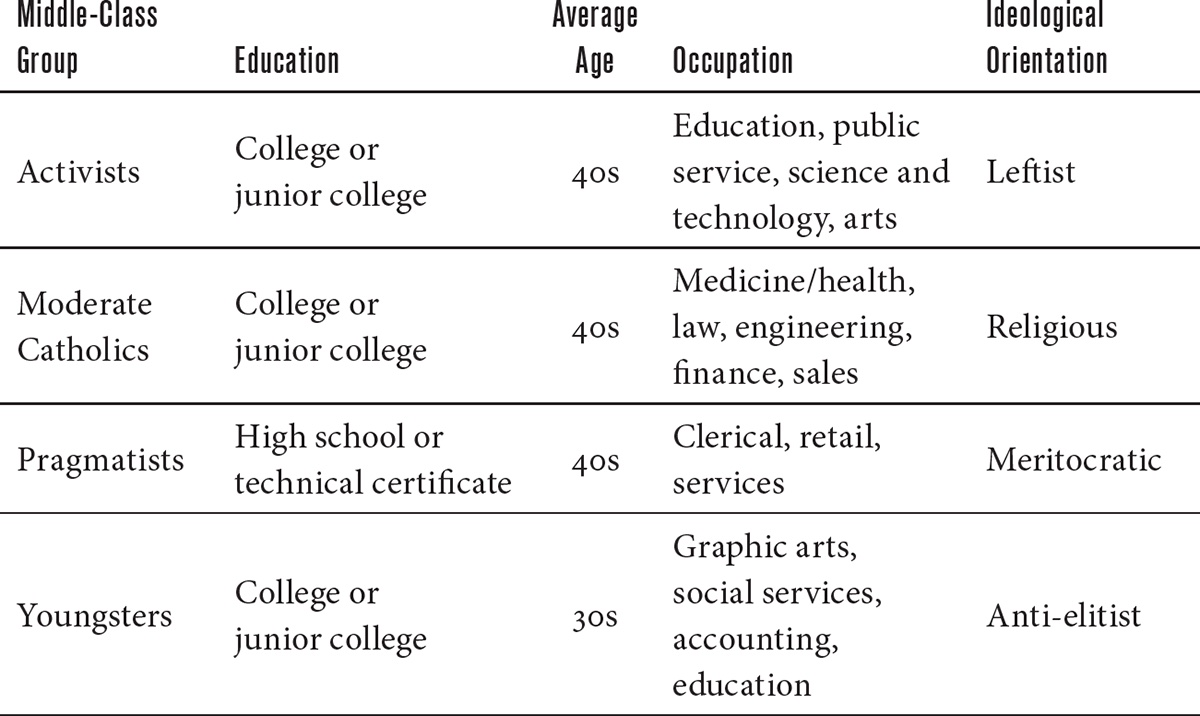
The concept of identity investments draws on the seminal work of sociologist Pierre Bourdieu.7 He argued that individuals develop a class-based habitus (a set of attitudes) based on their childhood socialization that builds on their parents’ class-based resources (education, social connections, money, and status). He contended that individuals’ social position (class location based on habitus and capital possession) shapes their investments in different markets (or fields). To illustrate: a teacher would likely offer similar explanations for why she prefers art films to Hollywood blockbusters as those she uses to articulate why she prefers organic to processed food. He argued that an individual’s habitus will lead them to use the same principles for investing in different consumption markets (what he calls “the homology between positions and position-taking”), and that competition in these markets often takes on a symbolic form as people with different habiti, or ways of viewing the world, clash over defining the stakes in these markets.
This book builds on Bourdieu’s comparison of different fields in his major work, Distinction, to examine how individuals in different segments of Chile’s middle class make investment decisions within markets that are decisive for economic survival and prosperity (employment and housing), the market that influences children’s prosperity as adults (education), and markets through which families display specific lifestyles (home decoration and cultural/leisure pursuits). Each of these fields operates as a site of symbolic display and competition. While other multimethod (statistical and interview-based) studies have compared distinct fields in the UK,8 Australia,9 Scandinavia,10 and among upper-middle-class Chileans,11 this is the first qualitative study of Chile’s middle classes that examines these five fields.
This study extends an aspect of Bourdieu’s analysis that has gained less attention than his work on education, cultural consumption, and class reproduction. Much of the development of Bourdieusian analysis has focused on these areas, leaving discussions of politics and ideology relatively undeveloped.12 In this context, I will argue that religious and political identities tend to attenuate purely class-based self-interest under specific circumstances. The concept of identity investments also highlights how Chile’s political history has influenced individuals’ market behavior.
Additionally, the concept of identity investments complements other analyses of the cultural roots of market behavior. Viviana Zelizer argues that the economic and cultural dimensions of consumer behavior are inextricably bound together so that it is a mistake to describe economic practices as “purely economic,” “solely status driven,” or “only cultural.”13 Similarly, Frederick Wherry argues that individuals often engage in economic behavior based on morally acceptable norms or guidance within their group.14 Identity investments highlight the importance of the cultural and moral dimensions of economic life.
Identity investments are distinct from the related terms of identity markets and identity work. The term identity markets refers to job discrimination based on employers’ racist assumptions.15 In contrast, the concept of identity work describes homeless individuals’ stigma management strategies.16 Departing from these two related concepts, I understand identity investments as the means through which individuals draw on preexisting identities and values as guides for participating in and interpreting distinct markets. Rather than focusing on discriminatory practices and stigma management—both sociologically important processes—identity investments help us understand how individuals bring cultural, moral, and political frameworks to their market behavior to achieve meaningful goals that may stretch beyond or come into conflict with self-interested wealth accumulation.
The concept of identity investments provides a useful tool for interpreting the attitudes, practices, and relationships of activists, moderate Catholics, pragmatists, and youngsters. Identity investments offer a powerful alternative to common scholarly interpretations of middle classes in Chile focused on opportunity hoarding, strategies seeking upward mobility, or fragmented identities (described below). Through an examination of middle-class individuals’ pathways into the labor market, school choice, housing choice, home decorations, and consumer behavior, I find consistent patterns within each of these four groups reflecting deeply held identities shaped through experiences in the family, education system, political organizations, and religious institutions. Where others see middle-class people as largely self-interested, I discovered deeply held religious, political, and anti-elitist beliefs within the upper-middle class.17 Further, I observed a strongly held meritocratic mentality through which lower-middle-class individuals sought to disassociate themselves from the poor as a stigma management strategy while criticizing the upper-middle class’s economic advantages and symbolic dominance. Table I.2 describes each group’s core identity investments.
In addition to identity investments, I use the concept of precarious privilege to understand the fragility of the middle class in contemporary Chile as well as middle-class Chileans’ motivations for constructing symbolic boundaries with other groups.18 While others have used the concept of precarious privilege to understand lifestyle migration19 or labor activism,20 I deploy this idea to examine the contradictory circumstances of middle-class families in Chile’s free market context.
The term precarity was initially developed to understand the growth of “non-standard, unprotected” work arrangements in the contemporary world.21 Here, I use the term precarious privilege to describe middle-class families’ relative prosperity alongside their fragile hold on their occupational positions. As explored throughout this book, middle-class adults change careers because they have downgraded professions, undergo bouts of unemployment, may be pushed out of desirable residential areas, and observe demographic transitions in their children’s schools that they believe undermine the schools’ sense of community. These threats to middle-class status reflect weakly regulated labor, housing, and education markets alongside a slowdown of economic growth beginning in the 2000s.22
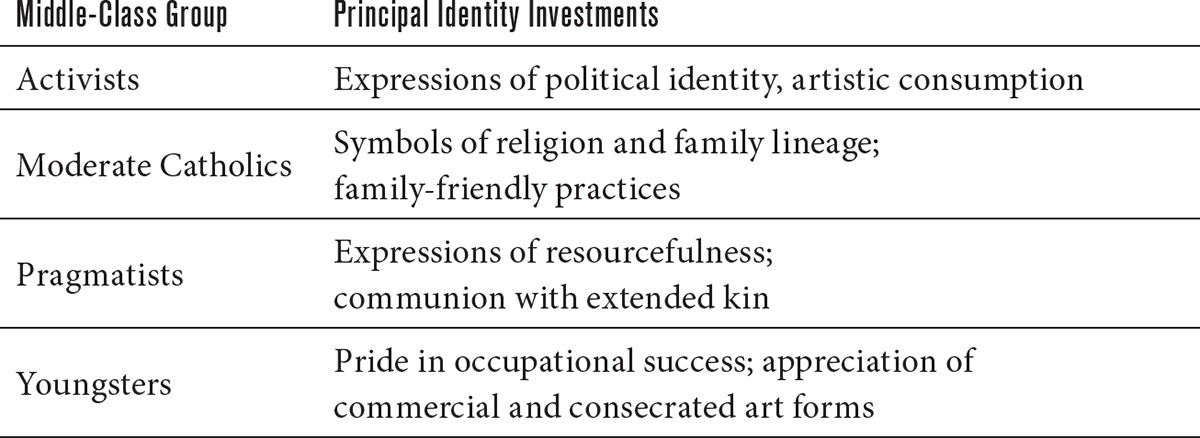
Consequently, members of the middle classes feel that their status is threatened and respond to those threats by constructing symbolic boundaries with other groups. Lamont developed the concept of symbolic boundaries to understand how upper-middle-class men distinguish themselves from others.23 These men construct cultural, socioeconomic, and moral boundaries with others to safeguard their own sense of moral worth. In the Chilean context, each middle-class group constructs a specific set of symbolic boundaries reflecting their social position and core values.
Activists who changed careers or work in downgraded professions criticize the wealthy and upwardly mobile members of the middle class for their ostentation and focus on money rather than the values of solidarity and education. Moderate Catholics who work in more stable, high-paid professions feel excluded from the elite because they cannot afford their lifestyle and criticize the upwardly mobile for their competitive and antisocial behaviors. Both these groups feel their existing status is threatened by the growing influence and prosperity of more business- and consumption-oriented segments of the middle class. Youngsters, who work in a variety of professions but are newcomers to the upper-middle class, criticize wealthy individuals’ and school administrators’ discriminatory behaviors toward immigrants, children with disabilities, and those with more modest incomes. This attitude reflects their desire for inclusion in the upper-middle class as they have experienced upward mobility but are not incumbents in this group. Finally, pragmatists experience hostility from upper-middle class people and criticize the “moral depravity” of the poor, largely because they are wedged between these two groups and work in low-paid, unstable jobs. Table I.3 outlines each group’s conditions of precarious privilege and the symbolic boundaries members construct.
To understand middle-class identity investments and their relationship to precarious privilege, we must define the middle classes and move beyond the here and now to examine how Chile’s recent history of political struggle and unresolved conflicts shaped middle-class identities that guide their market behavior and public practices.
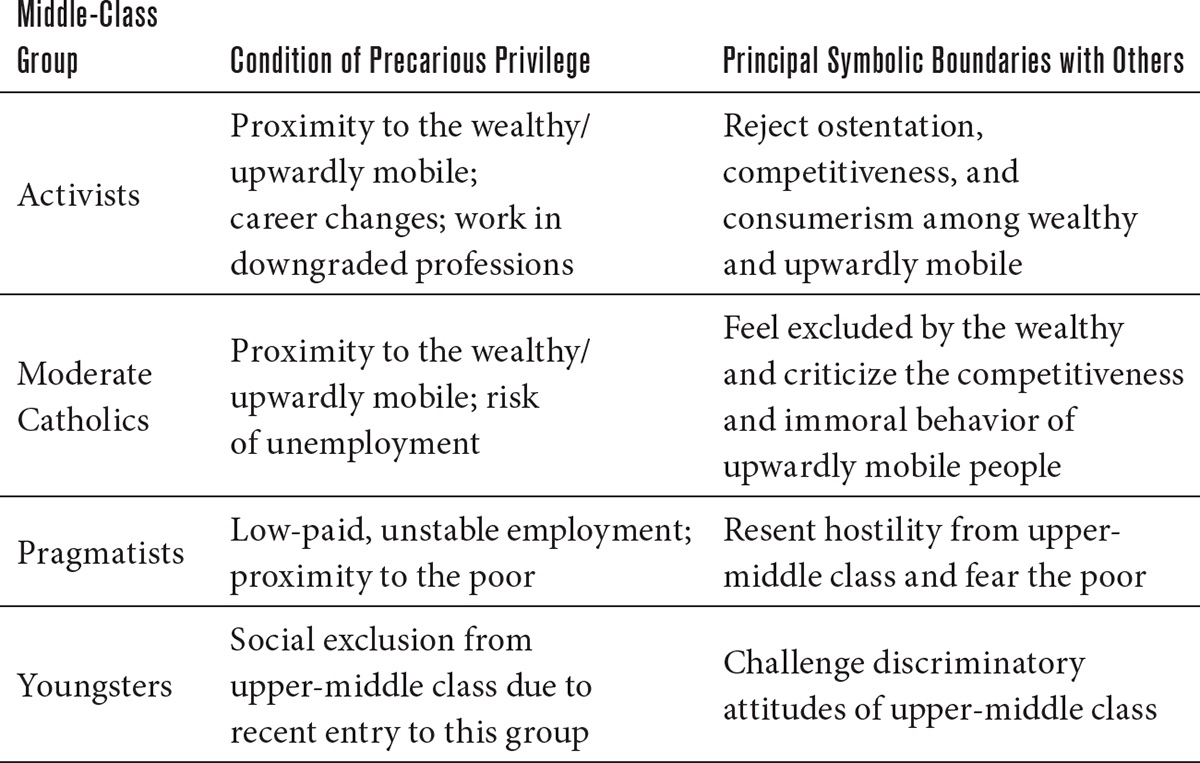
1. To paraphrase Tilly (1998, 10), opportunity hoarding is the ability of members of a group to access a valuable resource that can be monopolized and renewed to support its activities. For a critique and update of Tilly’s ideas, see Tomaskovic-Devey and Avent-Holt 2019.
2. Interview, April 14, 2009. I conducted and digitally recorded all interviews in Spanish and translated extracts to English. Miguel Pérez Ahumada and Leila Juzam Pucheu transcribed all recorded interviews.
3. Interview, March 24, 2009.
4. Interview, April 27, 2010.
5. Interview, November 9, 2008.
6. McAdam 1986.
7. Bourdieu 1984, 1993, 1996.
8. Bennett et al. 2009; Atkinson 2017; Savage et al. 2015; Savage et al. 2005.
9. Bennett et al. 1999.
10. Flemmen et al. 2019.
11. Méndez and Gayo 2019.
12. Bourdieu (1984) dedicated a chapter to “Culture and Politics.” There, he primarily focused on middle- and upper-class domination of political parties and the construction of public opinion, although he also examined how political affiliations vary across occupational groups. Bourdieu (1996, 158–187) explored variations in political affiliations among students across different fields in France’s elite graduate schools, or grandes écoles, though his main focus was on the shifting contours of France’s elite universities. Bourdieu (1988) examined how professors in different universities responded to France’s 1968 student and labor mobilization. Recent applications and extensions of Bourdieu’s political analyses include Atkinson (2017) and Jarness et al. (2019).
13. Zelizer 1989; 2005.
14. Wherry 2012.
15. Cunningham 2002.
16. Snow and Anderson 1987.
17. In a recent UN report, Barozet et al. (2021) highlight middle-class support for more egalitarian political change in the 2019–2021 period. However, this book argues that some segments of the middle classes pushed for this change more than a decade earlier, and their attitudes reflected political and religious experiences dating back to their college years in the 1980s. See Mau (2015) for an analysis of middle classes as increasingly self-interested actors that support market-based policies.
18. Lamont 1992.
19. Rey et al. 2020.
20. Roy 2021.
21. Mosoetsa et al. 2016.
22. Solimano 2012; Barozet et al. 2021.
23. Lamont 1992.